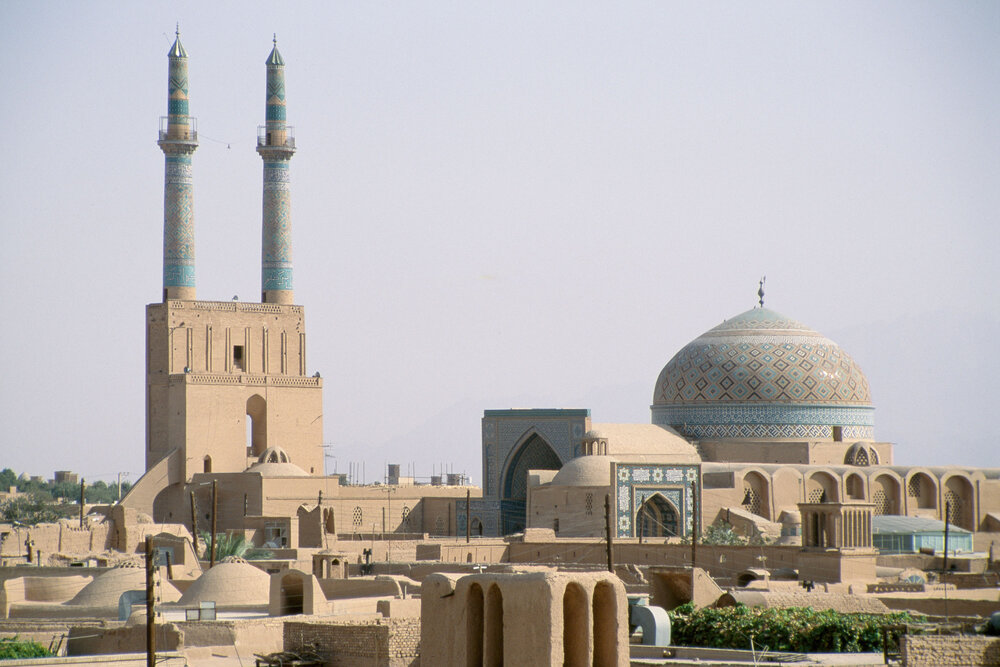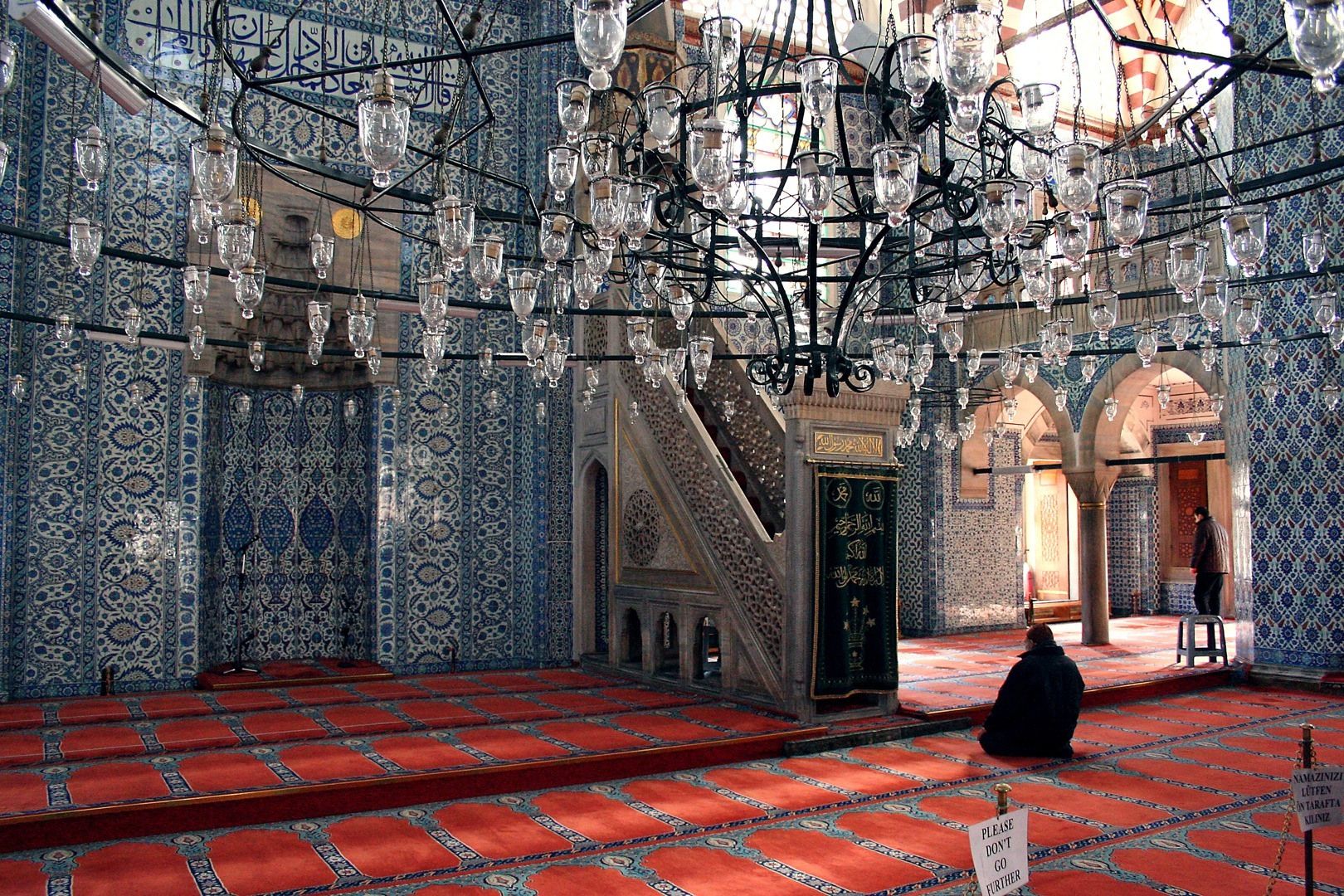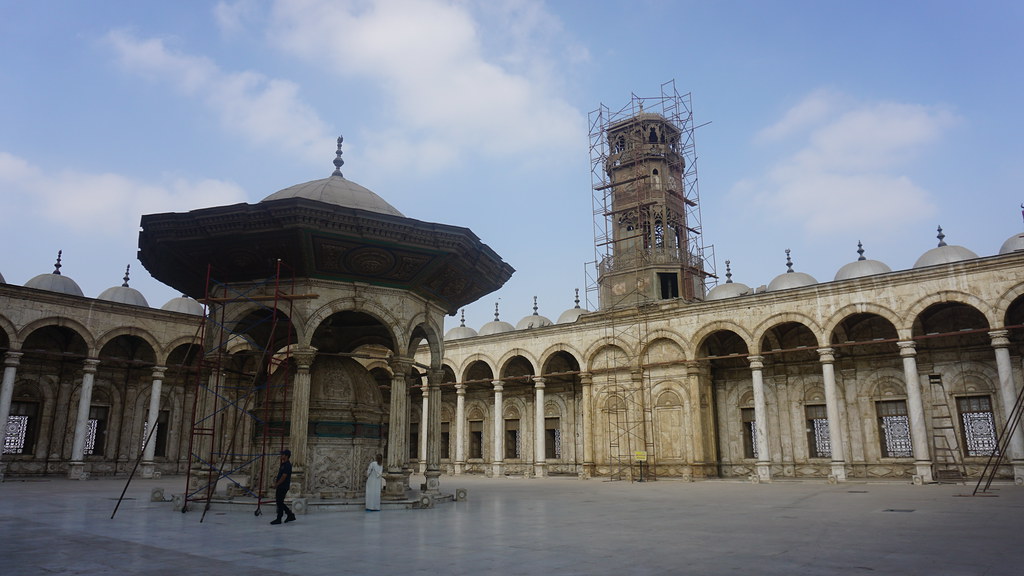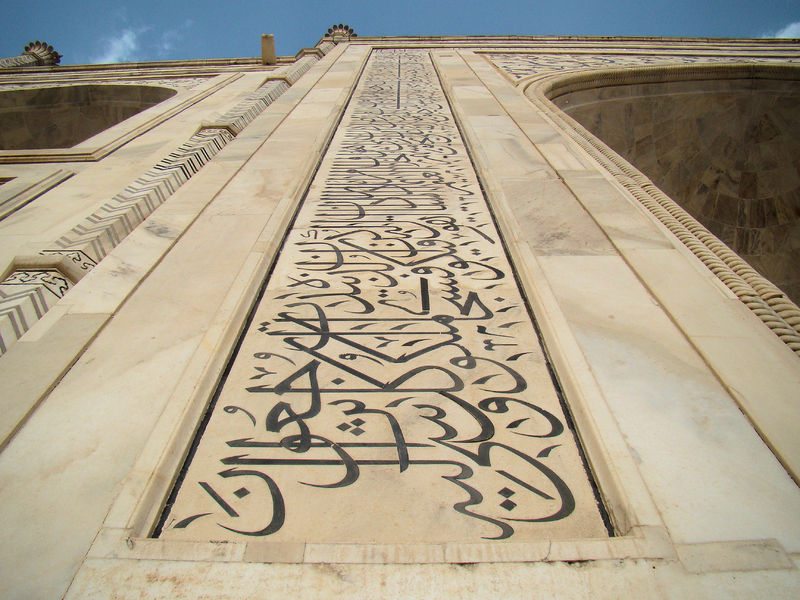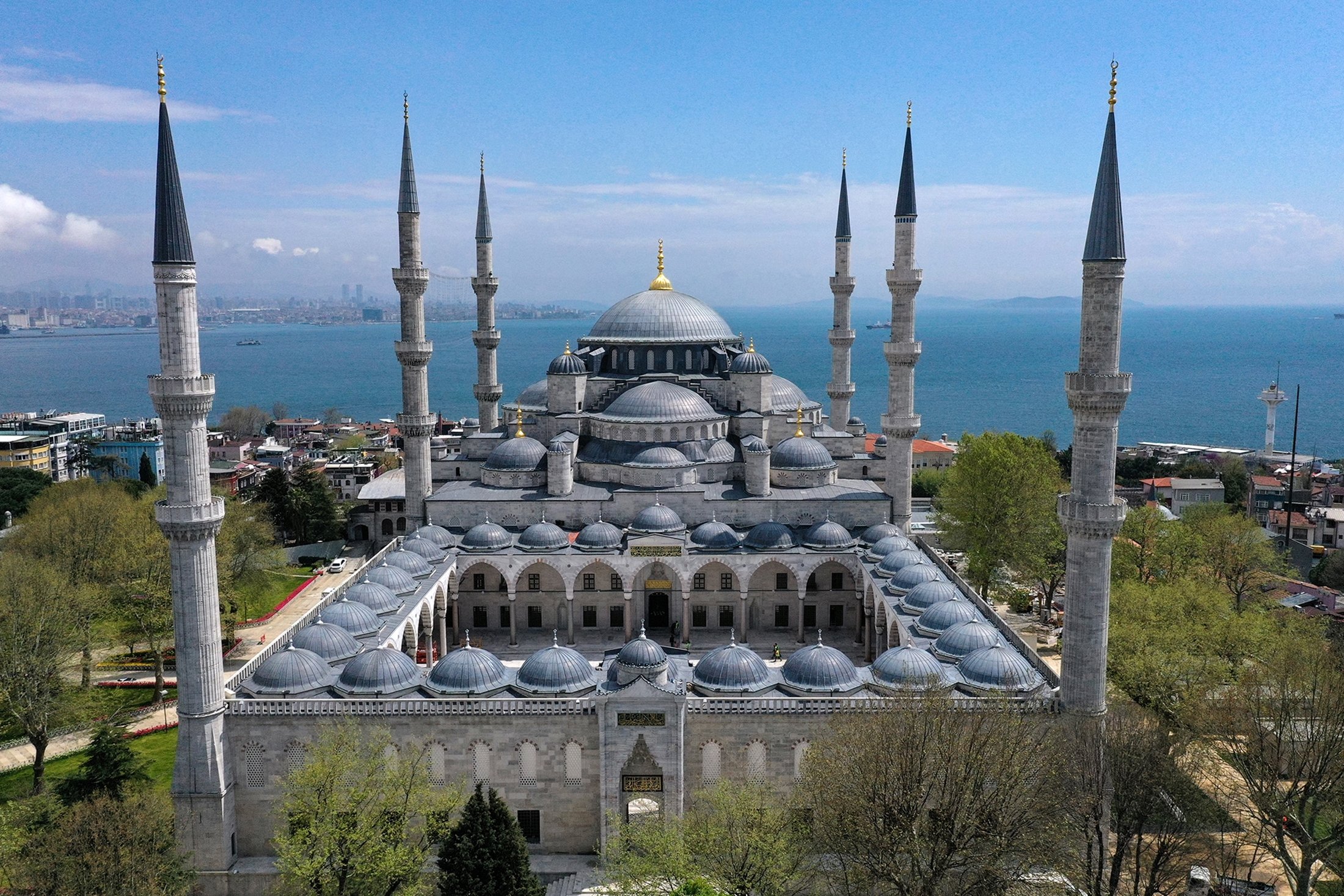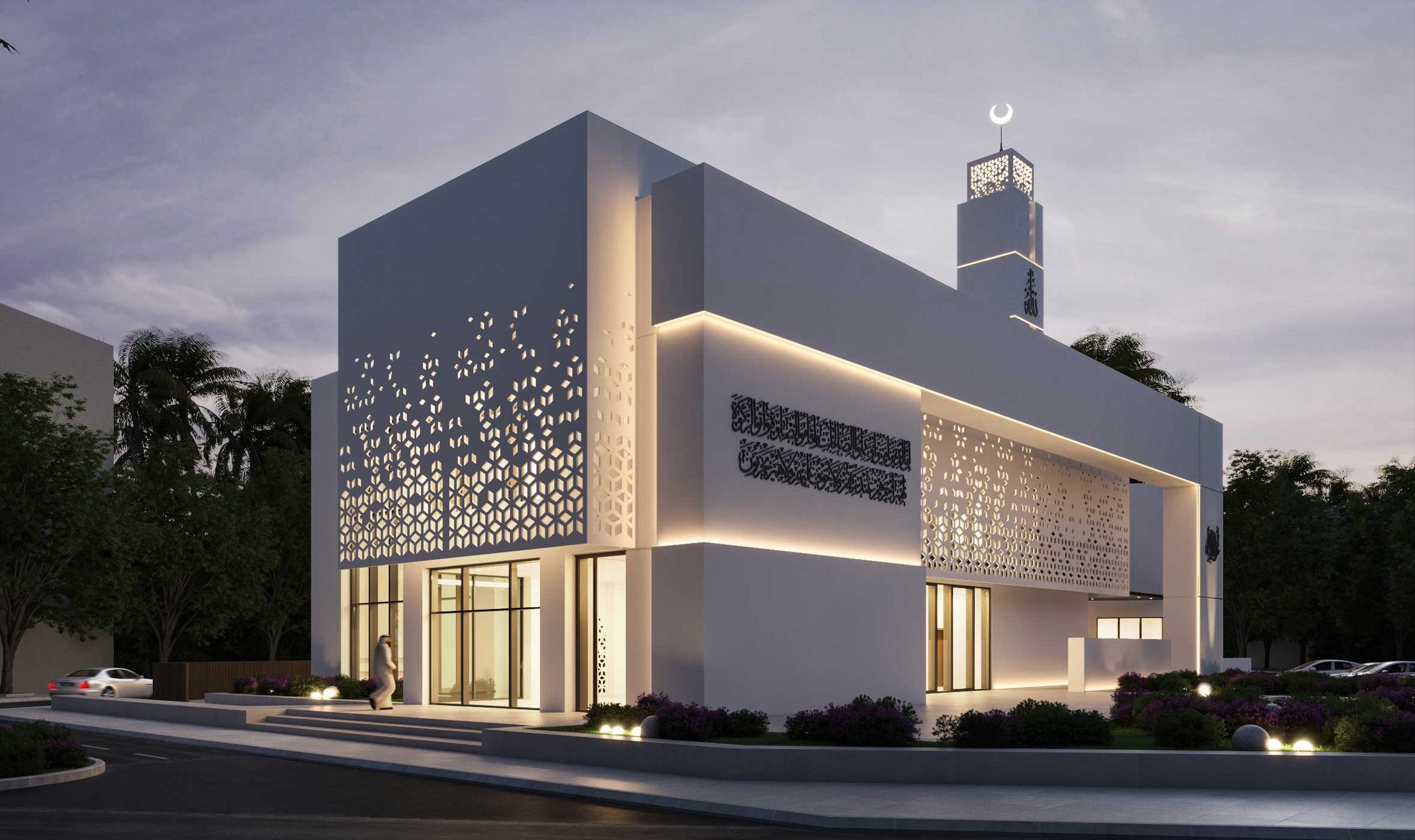Mosque Architecture - A Divine Fusion Of Faith And Design
Explore the intricate world of mosque architecture, from its historical roots and essential elements to its diverse regional styles. Delve into the evolution of mosque design, blending tradition with modern innovations and sustainable practices. Uncover the cultural richness of mosques in India, Spain, and Turkey, and learn about the symbolic significance of qibla walls, minarets, and geometric patterns. Discover the role of mosques in fostering unity, spirituality, and intellectual enlightenment. Immerse yourself in the timeless beauty of Islamic architectural heritage, where past and present harmoniously converge.
Author:George EvansNov 08, 2023472 Shares157.4K Views
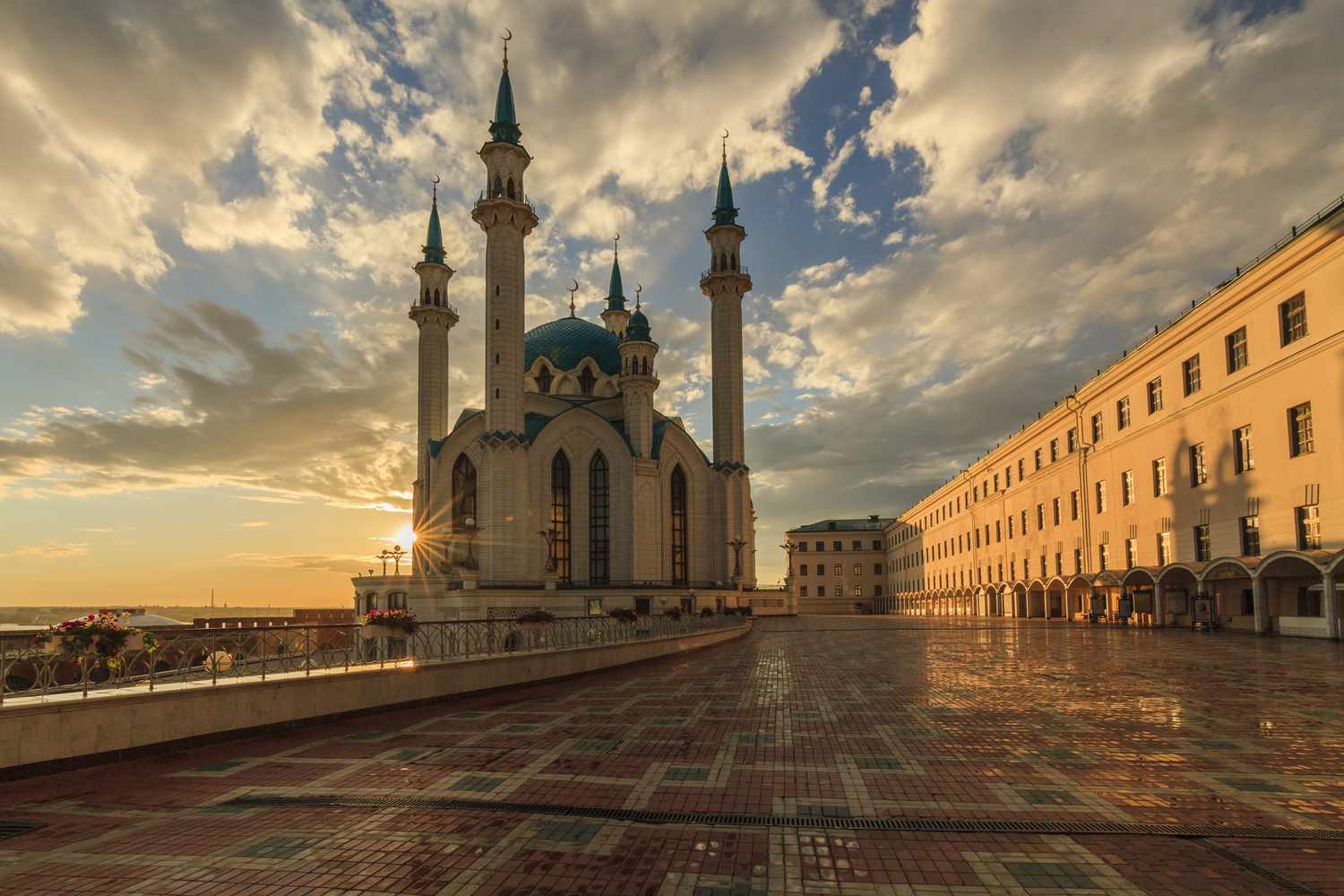
Mosque architecturestands as a testament to the sublime fusion of religious devotion and architectural brilliance. As centers of worship and community, mosques have played a pivotal role in Islamic culture, offering a glimpse into the diversity and intricacy of Islamic architectural styles across the world. In this comprehensive exploration of mosque architecture, we delve into the historical significance, architectural elements, and cultural nuances that define these sacred structures.
Historical Roots - Tracing The Origins Of Mosque Architecture
The evolution of mosque architecture is a fascinating journey that intertwines religious fervor with the ingenuity of architectural minds. To understand the essence of mosque design, one must delve into its historical origins, which can be traced back to the early days of Islam in the 7th century.
Early Mosques - Pioneering Simplicity, Humility, And Unity
In the nascent days of Islam, the Prophet Muhammad and his companions established the first mosques as humble structures, embodying the core values of the faith – simplicity, humility, and unity. These early mosques were unadorned, with basic layouts that emphasized the communal nature of worship. The focus was on creating spaces where believers could gather, pray, and commune with the divine without the distractions of opulence.
Architectural Evolution - Influence Of Local Cultures And Traditions
As Islam spread across diverse regions, from the Arabian Peninsula to Africa, Europe, and Asia, mosque designs underwent a gradual transformation. Local cultures and traditions began to influence the architectural elements, resulting in a rich tapestry of styles. In Persia, for instance, mosques embraced intricate tilework and vibrant geometric patterns, reflecting the artistic heritage of the region. In contrast, mosques in North Africa and Spain incorporated horseshoe arches and stucco ornamentation, influenced by Moorish and Andalusian architecture.
Innovative Techniques - Blending Faith With Architectural Brilliance
Mosque architects, inspired by the teachings of Islam and the cultural mosaic of their surroundings, developed innovative techniques that would define the architectural landscape for centuries to come. Ingenious use of arches, domes, and minarets became prominent features, each carrying a symbolic meaning rooted in Islamic tradition. The amalgamation of mathematical precision and artistic expression resulted in mosques that not only served as places of worship but also stood as testament to the creative genius of their builders.
Cultural Exchange - A Global Synthesis Of Styles
The spread of Islam through trade, conquest, and cultural exchange led to a fascinating synthesis of architectural styles. In regions where Islamic and non-Islamic cultures coexisted, mosques became centers of cultural exchange. This interaction gave rise to hybrid architectural forms, blending Islamic motifs with local artistic traditions. The Alhambra in Spain, with its Islamic and Christian architectural elements, exemplifies this harmonious fusion, showcasing the cultural dialogue that shaped mosque architecture over the centuries.
Legacy And Continuity - Preserving The Architectural Heritage
Today, the historical roots of mosque architecture continue to inspire contemporary designers and architects. The legacy of those early simple structures, rooted in the teachings of Islam, remains palpable in modern mosque designs. While contemporary mosques embrace innovative materials and sustainable practices, they still carry the essence of simplicity, humility, and unity that characterized their forebears.
Essential Architectural Elements Of A Mosque
Mosques, as sacred spaces where Muslims gather for worship, are characterized by distinct architectural elements that hold deep religious and cultural significance. These elements not only facilitate religious rituals but also serve as symbols of Islamic identity and unity. Here are the essential architectural elements that define a mosque's structure and purpose:
Qibla Wall - Facing The Spiritual Center
The qibla wall is a fundamental component of every mosque. It indicates the direction in which Muslims must face during their prayers, aligning themselves with the Ka'ba in Mecca, Islam's holiest site. This wall serves as a focal point for worshippers, symbolizing their spiritual connection with Mecca and the unity of the Muslim community worldwide.
Mihrab - The Ornate Niche Of Reverence
The mihrab, an ornate niche located within the qibla wall, marks the exact direction of Mecca. Highly decorated and often adorned with intricate inscriptions from the Qur'an, the mihrab stands as the most embellished part of a mosque. It is a visual representation of the sanctity of the space and serves as a guide for worshippers, ensuring their prayers are aligned correctly.
Minbar - Elevated Pulpit Of Guidance
The minbar is an elevated pulpit situated to the right of the mihrab. It is used by the prayer leader, known as the imam, during the Friday sermon (khutbah). Crafted from elaborately carved wood or stone, the minbar elevates the imam, allowing their voice to carry across the congregation. It serves as a platform for delivering religious teachings and guidance to the worshippers.
Minaret - Towering Symbols Of Faith
Minarets are tall towers that are either attached to or located adjacent to a mosque. Traditionally, the call to prayer (Adhan) is issued from minarets five times a day, reminding believers of the prayer times. Historically, minarets were designed to amplify the call to prayer, ensuring it could be heard throughout towns and cities. Today, microphones and speakers often project the call, but minarets remain iconic symbols of Islam, visible from afar, signifying the presence of a mosque and the practice of faith.
Mosque Courtyard (Sahn) - A Tranquil Oasis
The mosque courtyard, known as sahn, is an open space often located at the center of the mosque complex. It provides a tranquil oasis for worshippers to gather, especially during crowded prayer times.
Within the sahn, there is typically a public fountain, a source of water used for ablutions (wudu). Ablutions involve the ritual washing of hands, feet, and face before prayer, symbolizing purity and spiritual readiness. The presence of fountains in the arid lands of Arabia also holds symbolic meaning, evoking the four rivers of Paradise mentioned in the Qur'an, emphasizing the sanctity of water as a divine gift.
The Role Of The Mosque - Beyond Worship And Ornamentation
Mosques, beyond their architectural magnificence, serve as pivotal institutions in the lives of Muslim communities, embodying their collective faith, identity, and aspirations. These sacred spaces play a multifaceted role, acting as both a spiritual sanctuary and a vibrant hub of cultural and intellectual exchange.
Spiritual Center - Uniting Communities In Worship
At its core, a mosque serves as a spiritual center where Muslims gather collectively to worship, particularly during the congregational Friday prayer (Jumu'ah). The design and size of mosques are intricately tailored to meet the needs of specific Muslim communities, reflecting the diverse cultural and social fabric of the worshippers.
During prayer times, these mosques echo with the harmonious recitation of Quranic verses, fostering a sense of unity and devotion among the worshippers.
Education And Intellectual Enlightenment
Historically, mosques have been revered as centers of education and intellectual enlightenment. Islamic scholars and thinkers congregated within these hallowed walls to engage in discussions, share knowledge, and ponder the depths of religious and scientific thought.
The mosque, therefore, became a nurturing ground for wisdom, fostering a rich legacy of intellectual inquiry and scholarship that has significantly shaped human civilization.
Quranic Inscriptions - Bridging The Divine And The Earthly
One of the defining features of mosque architecture is the presence of intricate Quranic inscriptions, adorning both the interiors and exteriors of these sacred structures. These inscriptions establish a profound connection between the sacred text, the worshippers, and the physical space of prayer. Quranic verses, meticulously crafted in exquisite calligraphy, serve as a reminder of the divine teachings, infusing the atmosphere with a sense of spiritual reverence and sanctity.
Symbolism Through Ornamentation - Embracing The Divine Patterns
Intricate mosque decoration is a testament to Islamic artistic expression and spiritual symbolism. Unlike many other forms of religious art, mosque ornamentation abstains from depicting human or animal forms, considering them potentially idolatrous.
Instead, mosques feature a captivating array of geometric, floral, vegetal, and calligraphic designs, symbolically recalling the promise of Paradise as described in Islamic scriptures. These motifs not only adorn the physical space but also serve as a reminder of the transcendental beauty of the divine realm.
Cultural Diversity - Exploring Regional Mosque Architecture
Mosque architecture, as a reflection of diverse cultures and historical influences, presents a captivating tapestry of styles and designs across different regions. From the majestic Mughal marvels in India to the intricate legacy of Alhambra in Spain and the magnificence of the Blue Mosque in Turkey, each architectural masterpiece tells a unique story, blending local traditions with Islamic aesthetics.
Indo-Islamic Architecture - Mughal Marvels In India
In the heart of India, the Mughal emperors crafted architectural wonders that continue to awe the world. Jama Masjid in Delhi stands as a testament to their opulence and architectural prowess. Constructed with red sandstone and white marble, this mosque exemplifies the grandiosity of Mughal design. Its vast courtyard, adorned with delicate minarets and intricate carvings, blends seamlessly with Persian and Indian architectural elements. The harmonious fusion of these influences creates an architectural marvel, reflecting the cultural syncretism of the Mughal era.
Islamic Architecture In Spain - The Alhambra Legacy
In the sun-kissed landscapes of Granada, Spain, the Alhambra stands as a jewel of Islamic architecture in Europe. A UNESCO World Heritage Site, the Alhambra showcases the splendor of Islamic artistry during the Al-Andalus period. The intricate stucco work, horseshoe arches, and geometric patterns adorning its walls are a testament to the interplay of Islamic, Christian, and Jewish influences. The Alhambra's ornate courtyards, lush gardens, and majestic palaces create a captivating ambiance, offering a glimpse into the rich cultural exchange that defined the Iberian Peninsula's history.
Ottoman Architecture - The Magnificence Of The Blue Mosque In Turkey
Istanbul, once Constantinople, is adorned with architectural wonders, with the Blue Mosque (Sultan Ahmed Mosque) standing as an epitome of Ottoman grandeur. Its cascading domes, six slender minarets, and magnificent tilework create an aura of divine beauty. Step inside, and you'll be mesmerized by the mosque's interior, adorned with a breathtaking sea of blue tiles, showcasing the exquisite craftsmanship of the Ottoman era. The Blue Mosque's architecture, with its harmonious blend of domes, minarets, and intricate decorations, embodies the architectural brilliance of the Ottoman Empire, leaving a lasting impression on all who visit.
Modern Innovations - Adapting Mosque Architecture For The 21st Century
In the fast-paced technological landscape of the 21st century, mosque architecture is undergoing a transformative evolution. Architects and designers are embracing innovative approaches, blending tradition with modernity, and adapting to the challenges and opportunities of the contemporary era. With a focus on sustainability, environmental consciousness, and aesthetic preservation, mosques are being reimagined to meet the needs of the present while honoring their rich cultural and religious heritage.
Sustainable Design
In response to the pressing global concerns about climate change and environmental sustainability, modern mosque architecture has embraced sustainable design practices. Architects are incorporating green roofs, rainwater harvesting systems, and energy-efficient HVAC (Heating, Ventilation, and Air Conditioning) systems. By maximizing natural light and ventilation, these mosques reduce their carbon footprint and minimize energy consumption, demonstrating a commitment to environmental stewardship.
Energy-Efficient Lighting
Lighting plays a pivotal role in mosque architecture, creating an ambiance of serenity and reverence. In the 21st century, the focus has shifted towards energy-efficient lighting solutions. LED technology, with its low energy consumption and long lifespan, has become a popular choice. Smart lighting systems are also being integrated, allowing mosques to adjust lighting levels based on prayer times and occupancy, ensuring energy is used judiciously.
Innovative Materials
The choice of materials in mosque construction has witnessed a paradigm shift. While traditional elements such as marble, stone, and wood continue to be revered, innovative materials are making their way into contemporary mosque designs. Sustainable composites, recycled materials, and advanced concrete formulations are being utilized. These materials not only enhance durability and structural integrity but also contribute to reducing the environmental impact of construction.
Digital Integration
In the age of digital connectivity, mosques are embracing digital integration to enhance communication and connectivity. Wi-Fi connectivity, mobile apps for prayer times and events, and live streaming of sermons and lectures enable worshippers to engage with their community and faith in new and meaningful ways. These technological advancements foster a sense of community and facilitate the dissemination of knowledge and religious teachings.
Preserving Aesthetic Heritage
While embracing modern innovations, architects and designers remain committed to preserving the aesthetic heritage of Islamic architecture. Traditional geometric patterns, calligraphy, and architectural motifs continue to adorn contemporary mosques, bridging the gap between the past and the present. This delicate balance between heritage preservation and modernization ensures that the spiritual essence and cultural significance of mosques remain intact.
In this era of innovation and environmental consciousness, mosques are not just architectural marvels but also symbols of a community's commitment to sustainable practices and cultural preservation. These modern adaptations, with their careful blend of tradition and technology, serve as a beacon of inspiration, guiding future architectural endeavors.
Visit Fellowship Church Waco to learn more about our community and the values we uphold in architectural innovation and spiritual unity.
Mosque Architecture - People Also Ask
What Is The Basic Architecture Of A Mosque?
The basic architecture of a mosque typically includes several key elements:
- Qibla Wall:This is the wall in the mosque that faces Mecca, and it is the focal point for worshippers during prayers.
- Mihrab:A niche or a decorative panel in the qibla wall indicating the direction of Mecca. It is the most ornate part of a mosque and marks the spot where the imam leads the congregation in prayer.
- Minbar:A pulpit located to the right of the mihrab, from where the imam delivers the sermon (khutbah) during Friday prayers.
- Minaret:A tall tower, often adjacent to the mosque, from which the call to prayer (Adhan) is traditionally announced.
- Dome:A prominent architectural feature symbolizing the vault of heaven and often found atop the prayer hall.
- Courtyard (Sahn):An open space within the mosque complex, sometimes with a fountain, where worshippers can gather.
What Is The Architecture Of Mosques Characterized By?
The architecture of mosques is characterized by several distinctive features:
- Islamic Calligraphy:Quranic verses and Islamic calligraphy adorn the interior and exterior, often in intricate and decorative scripts.
- Geometric Patterns:Elaborate geometric designs, often representing infinity and unity, are prevalent in Islamic architecture, including mosques.
- Arches and Domes:Arches, both pointed and horseshoe-shaped, and domes are common architectural elements, adding grace and beauty to the structures.
- Avoidance of Figurative Art:Mosques typically avoid depictions of human or animal forms in artwork, focusing instead on abstract and non-representational designs.
- Minarets:Tall, slender towers with decorative elements, usually topped with a crescent moon, are key features of mosque architecture, symbolizing the vertical dimension of Islam.
What Are The 3 Main Types Of Islamic Architecture?
Islamic architecture is diverse and can be categorized into three main types:
- Religious Architecture:This includes mosques, madrasas (Islamic schools), mausoleums, and other structures specifically designed for religious purposes.
- Secular Architecture:This category encompasses palaces, forts, public buildings, and residences. Islamic rulers and dynasties across various regions have left a significant impact on secular architecture.
- Urban Architecture:This type includes the layout and design of Islamic cities and towns. Islamic urban planningemphasizes the centrality of the mosque, the organization of streets, and the creation of public spaces for community interaction.
Conclusion
Mosque architecture stands as a beacon of creativity, faith, and cultural heritage. From the simplicity of early designs to the grandeur of contemporary structures, mosques continue to inspire awe and reverence. As we celebrate the diverse architectural expressions of Islamic faith, we acknowledge the enduring legacy of mosque architecture, a testament to the harmony between spiritual devotion and architectural brilliance.
Jump to
Historical Roots - Tracing The Origins Of Mosque Architecture
Essential Architectural Elements Of A Mosque
The Role Of The Mosque - Beyond Worship And Ornamentation
Cultural Diversity - Exploring Regional Mosque Architecture
Modern Innovations - Adapting Mosque Architecture For The 21st Century
Mosque Architecture - People Also Ask
Conclusion

George Evans
Author
George Anderson, an exceptional architectural designer, envisions and brings to life structures that transcend the realm of imagination. With an unwavering passion for design and an innate eye for detail, George seamlessly blends form and function, creating immersive spaces that inspire awe.
Driven by a deep appreciation for the interplay of space, light, and materials, George's innovative approach redefines the possibilities of architectural design. His visionary compositions leave an indelible mark, evoking a sense of wonder and transforming the built environment.
George Anderson's transformative designs and unwavering dedication continue to shape the architectural landscape, pushing the boundaries of what is possible and inspiring generations to come.
Latest Articles
Popular Articles
